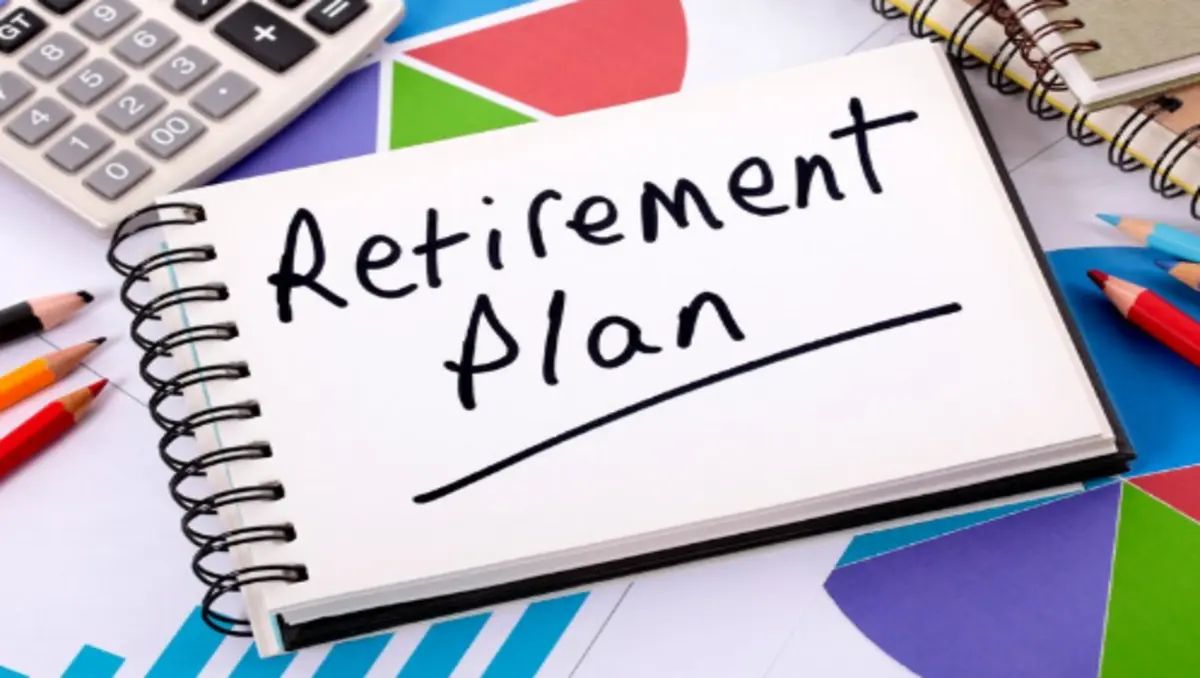Retirement planning – the word alone brings visions of sunny beaches, peaceful days, and the freedom to do what you’ve always wanted to do. But before we can enjoy those peaceful, worry-free days, we have to plan ahead. And as much as we love the idea of relaxing after decades of hard work, retirement doesn’t just happen. It takes thoughtful planning, discipline, and a bit of strategy.
Whether you’re decades away from retirement or just a few years out, it’s never too early (or too late!) to start thinking about your future. In this post, we’ll break down everything you need to know about retirement planning. From setting goals to understanding investment options, we’ll keep things simple and practical, so you can feel confident about your financial future.
Why is Retirement Planning Important?
Before diving into the how-to’s of retirement planning, let’s first understand why it’s so crucial.
- You Want Financial Independence: The goal of retirement planning is simple – to ensure that when you’re no longer working, you can still support yourself and live comfortably. If you don’t plan, you may end up relying on others or on a limited pension, which might not be enough.
- The Longer You Wait, the Harder It Gets: Time is one of the most important factors in retirement planning. The earlier you start saving, the more time your money has to grow. Compounding interest – where the interest you earn on savings generates more interest – is your friend. The earlier you start, the better.
- Longevity: People are living longer these days. Thanks to advances in healthcare, it’s not uncommon to live 20-30 years after retirement. If you don’t have enough saved, you could run out of money well before you run out of time.
- Uncertainty in Social Security: While Social Security can provide some support, it’s unlikely to be enough to fully fund your retirement. Don’t rely on it to cover all your expenses. Planning your own retirement savings helps ensure you’re not left in a tight spot.
Step-by-Step Guide to Retirement Planning
1: Assess Your Current Situation
Before jumping into saving and investing, take a step back and assess where you currently stand. This means getting a solid understanding of your income, expenses, debts, and any savings you already have.
- Income: What are your current monthly and annual earnings? This includes your salary, side income, and any other sources of income you might have.
- Expenses: What are your current living expenses? Track everything, from rent or mortgage payments to groceries, entertainment, and travel. Knowing this helps you figure out how much you need to maintain your lifestyle in retirement.
- Debts: Do you have any outstanding debts, like credit card bills, loans, or a mortgage? Paying off these debts before you retire should be a priority, as it reduces financial strain.
- Current Savings: Take stock of any existing retirement savings, such as your 401(k), IRA, or other investments. This gives you an idea of how much you’ve already saved and where you need to focus moving forward.
Once you have this snapshot, you’ll be in a better position to make a realistic plan.

2: Define Your Retirement Goals
Think about what you want your retirement to look like. This is an exciting part of the process because you get to imagine your future life without the constraints of work.
Here are some questions to help define your goals:
- When do you want to retire?: Do you want to retire at 60, 65, or even earlier? The sooner you plan, the sooner you can start saving and growing your wealth.
- How much will you need?: Start estimating how much you’ll need to maintain your current lifestyle. Consider where you want to live, what kind of activities you want to do, and how much health insurance might cost.
- What are your sources of income?: Apart from your retirement savings, do you have any pensions, Social Security, or rental income to rely on?
The clearer you are about your goals, the better you’ll be at setting up a plan to achieve them.
3: Choose the Right Retirement Account
Once you have a clear picture of your goals, it’s time to start saving. But where should you put your money? Thankfully, there are several retirement account options, each with its own benefits. Let’s go through the most common ones:
- 401(k) Plan: This is an employer-sponsored retirement account. You contribute a portion of your pre-tax income, which reduces your taxable income for the year. Some employers even match your contributions, which is like free money! If your employer offers a 401(k) match, try to contribute enough to take full advantage of it.
- IRA (Individual Retirement Account): An IRA is a personal account that you open on your own, separate from your employer. You can choose between a Traditional IRA (where contributions are tax-deferred) or a Roth IRA (where withdrawals in retirement are tax-free). Both offer tax advantages, but the main difference lies in how the taxes work.
- Roth 401(k): This is similar to a traditional 401(k), but with a Roth version, you contribute after-tax money. While you don’t get a tax break today, your withdrawals in retirement are tax-free, which can be a huge advantage in the long run.
- Other Options: There are other investment vehicles available, such as SEP IRAs for self-employed individuals, or health savings accounts (HSAs) if you have a high-deductible health plan.
When choosing a retirement account, make sure to consider things like contribution limits, tax benefits, and whether your employer offers a matching contribution.
4: Start Saving and Investing
This is where the rubber meets the road. Now that you’ve got your accounts set up, it’s time to start contributing and making your money grow. The key here is consistency and growth.
- Set a Savings Goal: The general rule of thumb is to save at least 15% of your pre-tax income for retirement planning . But, if that feels like too much at first, start with a smaller percentage and increase it over time.
- Invest Wisely: Simply saving money in a savings account will not give you the returns you need to retire comfortably. Investing in stocks, bonds, mutual funds, or index funds can provide much higher returns over time.

The earlier you start investing, the longer your money has to grow. Don’t be afraid to take calculated risks (depending on your age and risk tolerance), but also make sure to diversify your investments to protect yourself from market volatility.
- Automate Contributions: Setting up automatic contributions to your retirement accounts is a great way to stay on track. You won’t have to think about it, and your savings will grow automatically.
5: Monitor and Adjust Your Plan
Your retirement planning is not something you can set and forget. Life changes, markets fluctuate, and your goals may evolve over time. Therefore, it’s essential to review your plan at least once a year to make sure you’re still on track.
- Adjust Contributions: If you get a raise or a bonus, consider increasing your retirement contributions. Even a small increase can make a big difference over the long term.
- Rebalance Investments: If your investments have grown in a way that shifts your asset allocation too much (for example, you’ve ended up with too many stocks), it may be time to rebalance your portfolio to maintain your desired risk level. Retirement Planning
- Account for Life Changes: If you get married, have children, or experience a significant life event, you may need to adjust your retirement goals and contributions. Life is unpredictable, but with a little flexibility, you can adapt your plan to new circumstances.
6: Plan for Healthcare Costs
Healthcare is one of the largest expenses retirees face. Medicare may cover some of your healthcare needs, but it won’t cover everything. You’ll likely need supplemental insurance or long-term care insurance to fill the gaps.
- Medicare: Medicare is a federal health insurance program for people 65 or older. While it helps cover many health-related expenses, it doesn’t cover everything. You’ll want to budget for things like premiums, copayments, and any treatments that aren’t covered by Medicare.
- Long-Term Care: As you get older, the need for long-term care (nursing homes, assisted living, etc.) may arise. These services can be expensive, and unfortunately, they’re not typically covered by Medicare. Planning for long-term care can be tricky, but having the right insurance can help.
7: Consider Working with a Financial Planner
If retirement planning feels overwhelming, or if you’re unsure about where to start, a financial planner can be a valuable resource. They can help you create a customized plan based on your goals, income, and risk tolerance. They can also offer advice on tax strategies and how to optimize your investments.

Conclusion
Retirement planning may seem far off, but the sooner you start planning, the easier it will be to enjoy the retirement you’ve always dreamed of. The key is to start now, even if it’s just a small step. By assessing your current situation, defining your goals, choosing the right accounts, and making regular contributions, you’ll be well on your way to securing a comfortable future.
read more
https://financekhush.com/financial-technology-a-financial-services-2025/
There are top 5 best faq for “Retirement planning”
1. What’s the best age to start saving for retirement planning ?
The best time to start saving for retirement planning is right now, no matter how old you are! The earlier you start, the more time your money has to grow. If you’re in your 20s, you have decades to take advantage of compounding interest. But it’s never too late to start, even if you’re in your 40s or 50s – just remember that the more you save today, the more comfortable your future can be.
2. How much money do I need to retire comfortably?
Great question! The amount you need depends on your lifestyle and goals. A common rule of thumb is that you’ll need about 70-80% of your pre-retirement income annually in retirement. So, if you’re currently living on $50,000 a year, aim for $35,000 to $40,000 a year in retirement. However, if you plan to travel or take on expensive hobbies, you may need more. The key is to estimate your future expenses as accurately as possible and adjust your savings goals accordingly.
3. What’s the difference between a 401(k) and an IRA?
A 401(k) is a retirement savings plan offered by your employer, where you contribute pre-tax dollars, lowering your taxable income. Some employers even match your contributions, which is like free money!
An IRA (Individual Retirement Account), on the other hand, is something you set up on your own with a financial institution. There are two types: Traditional IRA (tax-deferred contributions) and Roth IRA (tax-free withdrawals in retirement). A 401(k) usually has higher contribution limits, but IRAs offer more flexibility and investment choices.
4. How much should I contribute to my retirement plan each month?
A common guideline is to aim for at least 15% of your pre-tax income. But if that feels too high right now, start smaller, even if it’s just 5-10%. The important part is to begin as soon as possible and increase your contribution over time, especially when you get raises or bonuses.
5. What if I can’t afford to save 15% of my income?
It’s totally okay if 15% feels too steep right now! The key is to start small and consistently. Even contributing 5% or 10% of your income will add up over time. As your financial situation improves (with raises, paying off debt, etc.), try to gradually increase the percentage you’re saving. Every little bit counts!
6. What should I invest in for retirement?
When it comes to retirement planning investing, diversification is your friend. Consider a mix of stocks, bonds, and other assets like real estate. Index funds are often recommended because they offer low fees and give you exposure to a broad range of companies. If you’re unsure about picking individual stocks or bonds, target-date funds are another option, as they automatically adjust your asset allocation based on your retirement date.
7. Can I retire early?
Yes, you can retire early, but it requires careful retirement planning. To retire before 65 (or even in your 50s), you’ll need to save aggressively, possibly even 20-30% of your income, depending on how soon you want to retire. You’ll also want to focus on minimizing your expenses and making smart investments that grow steadily over time. Early retirees often follow the FIRE (Financial Independence, Retire Early) movement, which focuses on extreme saving and investing to retire as soon as possible.
8. How do taxes affect my retirement savings?
Taxes are an important consideration when planning for retirement planning With a Traditional 401(k) or Traditional IRA, your contributions are tax-deferred, meaning you don’t pay taxes on the money you contribute until you withdraw it in retirement. With a Roth IRA or Roth 401(k), you pay taxes upfront, but your withdrawals in retirement are tax-free. In short, you’ll want to think about your future tax situation and whether you prefer to pay taxes now or later.
9. How can I make sure my money lasts throughout retirement?
The key to making your retirement planning savings last is to have a sustainable withdrawal strategy. A popular rule of thumb is the 4% rule, which suggests you can withdraw 4% of your retirement savings each year without running out of money for at least 30 years. However, this is just a guideline, and the best strategy depends on your spending habits, investment returns, and life expectancy. Working with a financial planner to create a personalized withdrawal plan is a good idea, especially if you plan to retire early.
Retirement Planning: Securing Your Future in 2025
